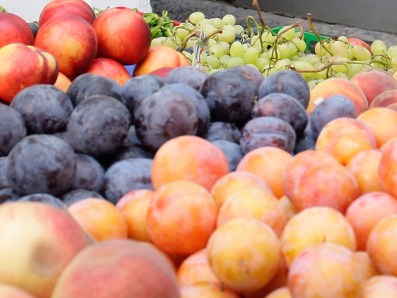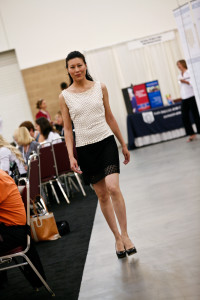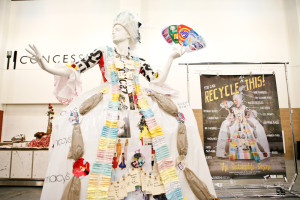
Adam Stein once wrote dismissively of vertical farming : "the notion of spending "hundreds of millions" of dollars to build weird, poorly sited temples of food production in areas much better suited to dense, green residential and retail space.... Local food has its merits, but that's what New Jersey
: "the notion of spending "hundreds of millions" of dollars to build weird, poorly sited temples of food production in areas much better suited to dense, green residential and retail space.... Local food has its merits, but that's what New Jersey is for."
is for."
I wonder what he would think of Dr. Dickson Despommier's collaboration with Architects Weber Thompson to build the Newark Vertical Farm - in New Jersey.

Pyramid farm by Eric Ellingsen and Dickson Despommier from The Vertical Farm
Dr. Despommier of Columbia University coined the term "vertical farm" and has been at the center of the movement since it started. He has a terrific website showing many different designs for vertical farms. The press release sums up their purpose nicely:
The vertical farming concept begins with a simple idea: grow food in a climate-controlled multistory building free of pollutants, pesticides and seasons while producing the highest-quality produce in an urban environment. The Vertical Farm, designed to supplement the existing food supply while bringing more healthful products to our cities, is but one of a host of solutions needed to address the complexities of bringing food to people. Despommier envisions buildings filled with stacked soil-less growing systems designed to produce the maximum yield and eliminate contamination.
(You can read much more about the benefits in Dr. Despommier's essay on vertical farming by clicking on link)

Eco-Laboratory by Weber Thomson
Weber Thompson is one of this writer's favorite architecture firms, primarily because of their office building, Whole Earth Catalogue of green systems." but also for their approach to vertical farms, their integration of the concept into the south face of their eco-laboratory.

Dan Albert, the ecological designer at Weber Thompson, describes the new collaboration:
The Newark Vertical Farm represents not only the next generation for Urban Agricultureand Vertical Farming but also an approach to design which incorporates integrated and overlapping sustainable design features. More than just a Vertical Farm, it is a research and development program for sustainable design in an urban context.

The greenhouse space contains high intensity soilless growing systems and is designed to be flexible and adaptable. The ground floor showcases a demonstration green house for public interaction while the upper floors serve as an agricultural laboratory. The purpose of the building is to develop, test, and educate with the ultimate goal of a commercially viable building type.
Some have noted that vertical farms don't make a lot of sense, primarily because of the cost of construction, artificial lighting and all of the other costs resulting from building a single purpose building for farming.

But Dan Albert and Weber Thompson take a different approach that addresses those problems, by integrating the vertical farm into the face of a building that serves other functions as well.
The buildings and the site are oriented to maximize solar exposure, with the Vertical Farm green house section facing due south and the more conventional urban agriculture plot with south to north rows. The spaces are arranged in a series of overlapping rooms that allow both observation and function to coexist.
Whether it makes economic sense to put this in Newark, where there is probably a lot of room for horizontal farming, in the middle of what is still described as "the Garden State" is still a question. But it does look like a great opportunity to find the answer.










